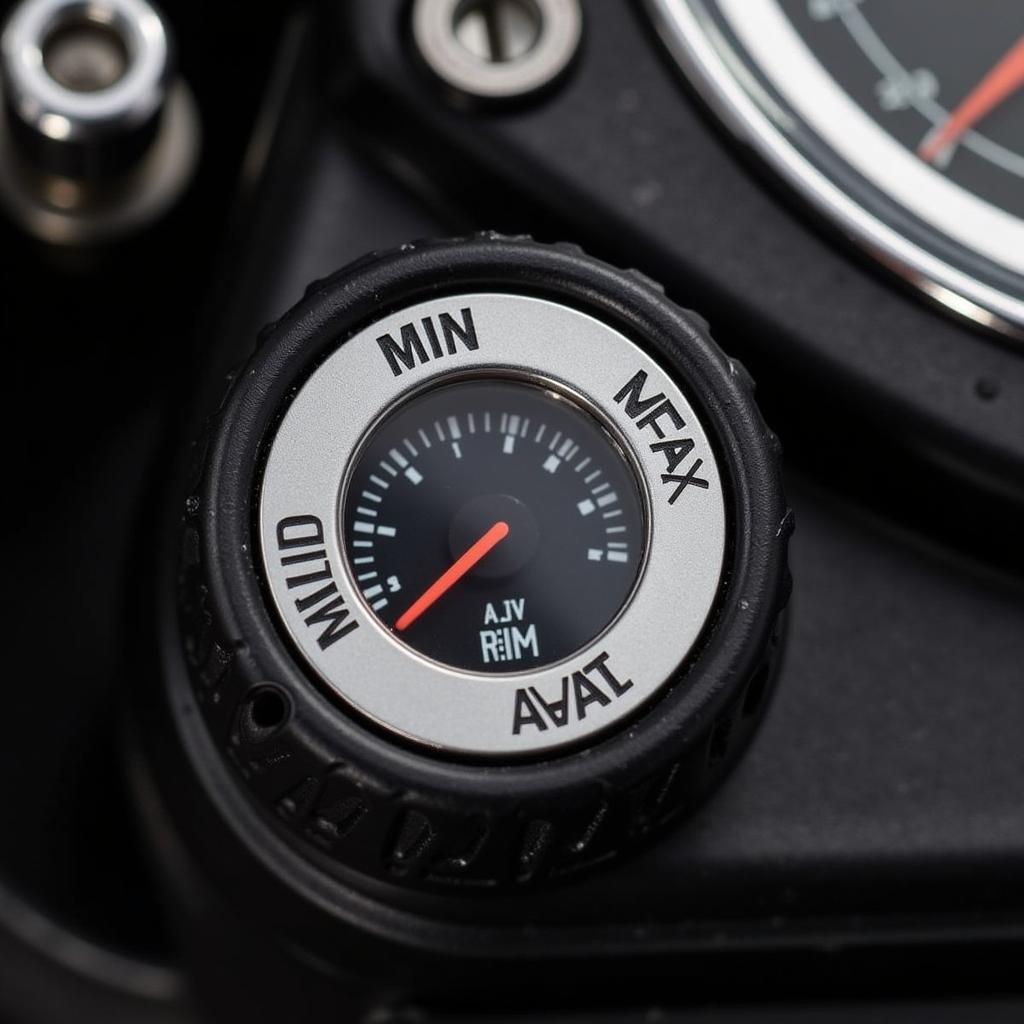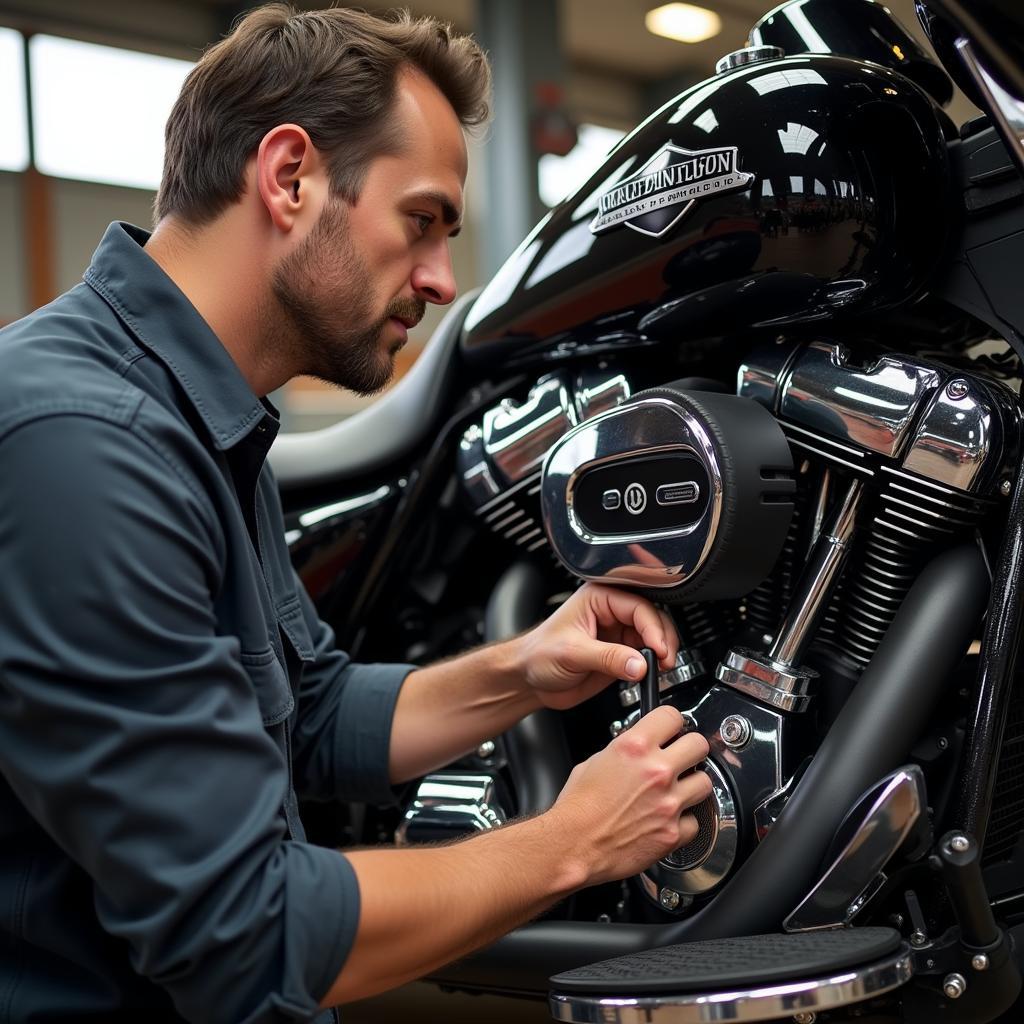One of the most crucial safety systems on your Harley Davidson is the brake system. When your bike displays a brake warning light, it’s a clear signal that something isn’t right and needs immediate attention. Ignoring these warnings could lead to brake failure, putting you and others at risk. This guide will walk you through the common causes of brake warning lights on Harley Davidson motorcycles and provide insights into how you can address them.
Understanding Your Harley’s Brake Warning System
Your Harley Davidson utilizes warning lights to communicate potential issues, including those related to your brakes. Here’s what you need to know:
- Single Brake Warning Light: Most Harleys feature a single red warning light that illuminates when there’s an issue with the front or rear brake circuit.
- ABS Warning Light: If your motorcycle is equipped with an Anti-lock Braking System (ABS), there will be a dedicated amber warning light. When illuminated, it signifies a potential problem with the ABS system.
Common Causes of Brake Warning Lights
Several factors can trigger brake warning lights on your Harley Davidson. Here are some of the most common culprits:
1. Low Brake Fluid Level
This is the most frequent reason for the brake warning light to turn on. Brake fluid, a hydraulic fluid, is essential for transmitting the force applied to the brake lever or pedal to the brake calipers, ultimately stopping the motorcycle.
- How to check: Locate the brake fluid reservoir on your Harley’s handlebars. The reservoir will have a “MIN” and “MAX” marking. If the fluid level is at or below the “MIN” mark, it needs to be topped up.
 Harley Davidson Low Brake Fluid
Harley Davidson Low Brake Fluid
2. Worn Brake Pads
Brake pads are designed to wear down over time. When they wear thin, the brake caliper pistons have to extend further to apply the same braking force, leading to a drop in brake fluid level and triggering the warning light.
- How to check: Inspect the brake pads by looking through the caliper. If the pad material is less than 1/4 inch thick, it’s time for a replacement.
3. Brake Fluid Leak
A leak in the brake system can also cause a drop in brake fluid level, activating the warning light.
- How to check: Inspect all the brake lines, hoses, and connections for any signs of leakage. Look for wet spots or drips on the ground beneath the motorcycle, especially near the wheels and calipers.
4. Faulty Brake Light Switch
The brake light switch is responsible for activating the brake lights when you engage the brakes. A malfunctioning switch can also cause the brake warning light to illuminate.
- How to check: If you suspect a faulty brake light switch, it’s best to consult a qualified Harley Davidson mechanic for diagnosis and repair.
5. ABS Sensor Issues
For motorcycles equipped with ABS, a problem with one or more wheel speed sensors, the ABS module, or related wiring can trigger the ABS warning light.
- How to check: Diagnosing ABS issues often requires specialized diagnostic tools. It’s recommended to consult with a certified Harley Davidson technician if you suspect a problem with your ABS system.
What to Do When Your Brake Warning Light Comes On
If your Harley’s brake warning light comes on, it’s crucial to address the issue promptly.
- Safely pull over: As soon as it’s safe, pull over to the side of the road and come to a complete stop.
- Check the brake fluid level: If the level is low, top it up with the recommended brake fluid for your Harley Davidson model. Refer to your owner’s manual for the correct type and procedure.
- Inspect for leaks: If you find a leak, do not continue riding. Have your motorcycle towed to a qualified mechanic for repair.
- Seek professional help: If you cannot identify the problem or are uncomfortable addressing it yourself, seek help from a qualified Harley Davidson mechanic.
 Harley Davidson Brake System Inspection
Harley Davidson Brake System Inspection
Preventative Maintenance for a Safer Ride
Regular maintenance plays a vital role in preventing brake problems and ensuring your safety on the road.
- Regularly inspect your brakes: Check your brake fluid level at least once a month and before any long rides.
- Adhere to the recommended maintenance schedule: Your Harley’s owner’s manual outlines a specific maintenance schedule. Follow it diligently to ensure optimal brake system performance.
- Use high-quality brake fluid and parts: Always use the brake fluid recommended by Harley Davidson and opt for high-quality replacement parts when servicing your brakes.
Expert Insight: “Don’t underestimate the importance of using the correct brake fluid for your Harley,” says John, a senior Harley Davidson mechanic with over 20 years of experience. “Using the wrong type can damage your brake system and compromise its performance.”
Conclusion
Your Harley Davidson’s brake warning light is a critical safety feature. Understanding its meaning and the common causes can help you address issues promptly and ride safely. Regular maintenance, timely repairs, and a proactive approach to brake system care will go a long way in ensuring a smooth and safe riding experience.
Remember, your safety is paramount. If you’re ever unsure about your motorcycle’s brake system or encounter persistent warning lights, consult a qualified Harley Davidson mechanic for expert diagnosis and repair.
FAQs
1. Can I ride my Harley with the brake warning light on?
It is strongly advised not to ride your Harley Davidson with the brake warning light illuminated. This indicates a potential problem with your braking system that could lead to brake failure, putting you at risk.
2. How often should I replace my Harley’s brake fluid?
Harley Davidson typically recommends replacing your brake fluid every two years or as specified in your motorcycle’s maintenance schedule.
3. Can I add any brake fluid to my Harley?
No, you should only use the type of brake fluid specifically recommended by Harley Davidson for your motorcycle model. Using the wrong type can damage your brake system.
4. How long do Harley Davidson brake pads last?
The lifespan of brake pads varies depending on riding style, conditions, and the type of pads. However, it’s generally recommended to inspect them every 5,000 miles and replace them if they are worn down to 1/4 inch or less.
5. What should I do if my ABS light stays on?
If your ABS warning light stays illuminated, it indicates a potential problem with the ABS system. It’s best to consult with a certified Harley Davidson technician for diagnosis and repair.


